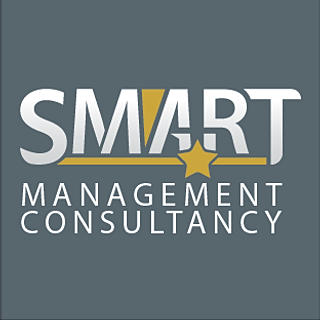Discover Effective Tools for Risk Management
- Smart Management Consultancy
- Aug 27
- 4 min read
In today’s fast-paced and unpredictable business environment, managing risks effectively is crucial for success. Organizations face various challenges, from financial uncertainties to operational disruptions. To navigate these challenges, businesses need reliable risk management tools that help identify, assess, and mitigate potential threats. This article explores some of the most effective tools available, providing practical insights and actionable recommendations to enhance your risk management strategy.
Understanding Risk Management Tools and Their Importance
Risk management tools are systems, software, or methodologies designed to help organizations identify potential risks, evaluate their impact, and implement strategies to minimize or eliminate them. These tools enable businesses to make informed decisions, protect assets, and ensure continuity.
Some common types of risk management tools include:
Risk assessment software: Helps quantify and prioritize risks.
Risk registers: Track identified risks and their mitigation status.
Scenario analysis tools: Simulate different risk scenarios to prepare responses.
Compliance management systems: Ensure adherence to regulations and standards.
Using these tools effectively can reduce unexpected losses, improve operational efficiency, and enhance stakeholder confidence.

Top Risk Management Tools to Consider
Choosing the right risk management tools depends on your business size, industry, and specific needs. Here are some widely used and effective tools that can help you manage risks efficiently:
1. Risk Registers
A risk register is a simple yet powerful tool that lists all identified risks, their likelihood, impact, and mitigation measures. It serves as a central document for tracking risk status and accountability.
Benefits:
Easy to update and maintain.
Provides a clear overview of risks.
Facilitates communication among team members.
Actionable tip: Use spreadsheet software or specialized risk management platforms to create dynamic risk registers that can be shared and updated in real-time.
2. Risk Assessment Software
These software solutions automate the process of risk identification and evaluation. They often include features like risk scoring, reporting, and dashboards.
Examples:
LogicManager
Resolver
RiskWatch
Actionable tip: Select software that integrates with your existing systems and offers customizable risk criteria to suit your business context.
3. Scenario Analysis Tools
Scenario analysis tools help simulate different risk events and their potential impact on your business. This allows you to prepare contingency plans and allocate resources effectively.
Benefits:
Visualizes complex risk scenarios.
Supports strategic decision-making.
Enhances preparedness for unexpected events.
Actionable tip: Regularly update scenarios based on changing market conditions and internal factors to keep your risk management proactive.
4. Compliance Management Systems
Compliance tools ensure your business adheres to legal and regulatory requirements, reducing the risk of penalties and reputational damage.
Features:
Automated compliance tracking.
Audit trail documentation.
Policy management.
Actionable tip: Choose systems that provide alerts for upcoming compliance deadlines and changes in regulations relevant to your industry.

What are the 5 C's of Risk Management?
The 5 C's of risk management provide a framework to understand and address risks systematically. They are:
1. Clarity
Understanding the nature and scope of risks clearly is the first step. This involves identifying what risks exist and how they might affect your business.
2. Consistency
Applying risk management processes consistently across all departments ensures uniformity and reduces gaps in risk coverage.
3. Control
Implementing controls to mitigate risks is essential. Controls can be preventive, detective, or corrective.
4. Communication
Effective communication ensures that all stakeholders are aware of risks and the measures in place to manage them.
5. Culture
Fostering a risk-aware culture encourages employees to identify and report risks proactively.
Actionable tip: Incorporate the 5 C's into your risk management training programs to build a resilient organization.

Integrating Risk Management Tools with Professional Services
While tools are essential, combining them with expert guidance can significantly enhance your risk management efforts. Professional risk management services offer tailored solutions, expert advice, and ongoing support to help you navigate complex risks.
Advantages of partnering with risk management services:
Access to specialized knowledge and experience.
Customized risk assessments and mitigation plans.
Continuous monitoring and improvement of risk strategies.
Actionable tip: Evaluate service providers based on their industry expertise, technology capabilities, and client testimonials to ensure a good fit.
Best Practices for Implementing Risk Management Tools
To maximize the benefits of risk management tools, consider the following best practices:
Start with a clear risk management policy that defines objectives, roles, and responsibilities.
Train your team on how to use the tools effectively and understand risk concepts.
Regularly update your risk data to reflect new threats and changes in your business environment.
Integrate risk management with business processes such as project management, finance, and compliance.
Use data analytics to identify trends and predict potential risks.
Encourage a culture of transparency where employees feel comfortable reporting risks without fear.
By following these steps, you can create a robust risk management framework that supports your business goals.
Effective risk management is not just about avoiding losses but also about seizing opportunities with confidence. By leveraging the right risk management tools and combining them with expert services, businesses can build resilience and thrive in uncertain environments. Start exploring these tools today to safeguard your future and drive sustainable growth.















Comments